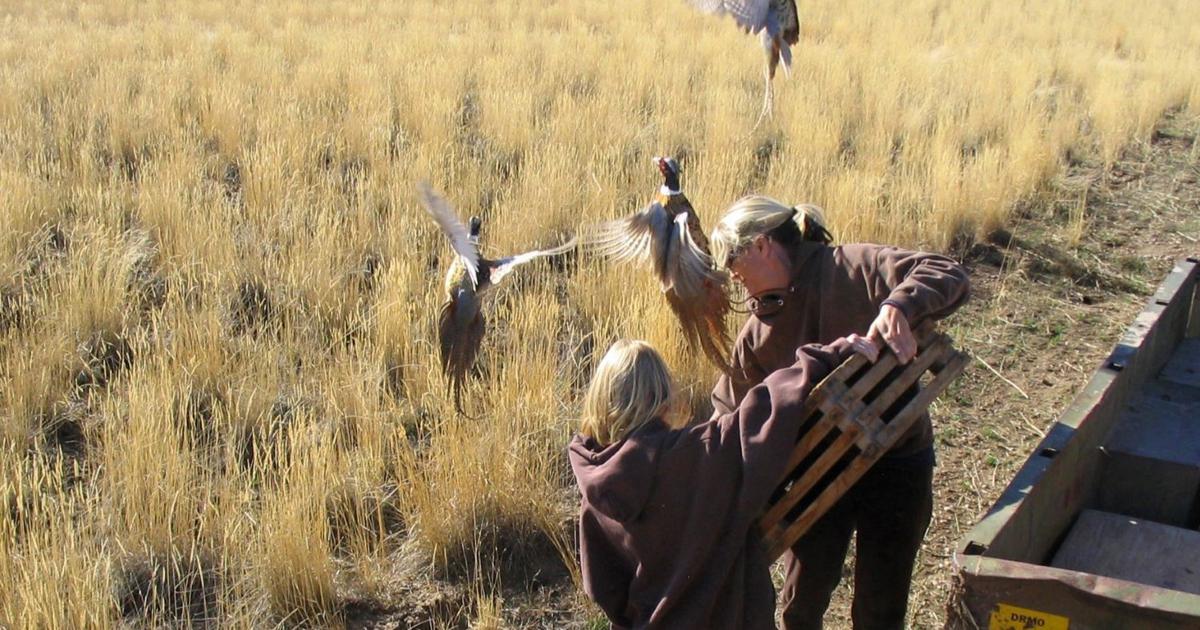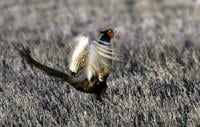LOGAN – The general pheasant and quail hunts are right around the corner and the Division of Wildlife Resources wants to offer tips for those planning to target either of these birds this fall.

DWR offers suggestion in the northern part of the state on how to find pheasants.
The general pheasant hunting season in Utah begins Nov. 2 and runs through Dec. 1. The Youth Hunt goes on from Oct. 26 to 31. DWR will release pheasants on various wildlife management areas and Walk-in Access properties around the state each week during the season to provide additional opportunities for hunters to be successful.
Visit the DWR website to see the release locations to find locations listed as either a youth hunt release site, a general-season release site or a site where birds will be released during both hunts. Biologists will be releasing pheasants at different times of day, on different days of the week.
In Northern Utah, Pheasant numbers seem to be higher this year compared to previous years. Many large brood sizes were observed during surveys this year. Many of the pheasants in northern Utah were found to be on private property in the eastern portion of Box Elder County. Written permission is required to hunt on any private land.
Tips for hunting pheasants
Pheasants inhabit areas near fields of wheat, corn or other plants that provide feed for them. They also prefer stemmed grass that provides nesting cover, as well as areas with dense woody vegetation such as red cedar or chokecherry. In snowy winter months, pheasants can often find them sheltering in wetlands with thick cattails and bulrush. Hunting with a well-trained dog will increase your chances of success.
“If you don’t have a dog, you can still be successful by walking slowly to flush out the pheasants,” DWR Upland Game Coordinator Heather Talley said. “Many times, they will flush if you stand near them for a few minutes because they think they’ve been spotted.”
Talley also recommends walking along ditch banks or fence lines is also a good hunting strategy. Pheasants typically prefer to run rather than fly away, so walking along these areas are more likely to drive them out into the open.
“Hunters should also target the DWR wildlife management areas located throughout the state because we will be releasing pen-reared rooster pheasants in these areas this fall,” Talley said. “Birds will be released each week throughout November to help increase hunter success and give everyone a good opportunity to harvest birds this season. If you do choose to hunt on one of our WMAs, be willing to hike a long way away from parking areas and other hunters to increase your chances of finding the wild birds.”
Hunters should remember that several of the WMAs require nontoxic shot (for example, steel shot) when hunting. Lead shot should not be used.
Quail (California and Gambel’s)
Utah’s general quail hunting season runs from Nov. 2 to Dec. 31. Hunting quail in northern Utah may be different than other places in the state.
California quail can usually be found in urban areas along the Wasatch Front, from I-80 north to the Idaho border. Hunting on private land requires written permission from landowners.

California quail gathering at a spot in Nirthern Utah.
Tips for hunting quail
When hunting Gambel’s quail, look for brushy foothills, Joshua trees, dry washes and draws with black brush or desert almond. California quail may be spotted in washes full of water and brushy cover, and both species will eat flowers from grass, trees and shrubs, as well as seeds and leaves.
“It’s best to hunt quail with a trained hunting dog, since quail would rather hunker down and hide than fly away,” Talley said. “Holding the quail in place with a dog will enable you to get close enough to flush the birds and get a shot. If you don’t have a dog, you can still hunt quail successfully. If you get close enough to quail as they are sprinting before taking flight, you can still get a good shot.”



